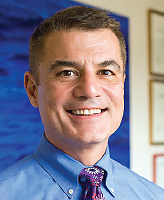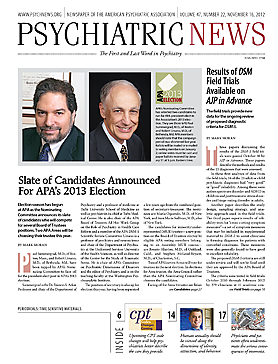On October 18, 2012, Gallup released a new study of 121,290 interviews that asked the following question: “Do you, personally, identify as lesbian, gay, bisexual, or transgender?” 3.4% answered yes. Despite the impressive number of participants in the survey, many scholars have already found significant flaws with the study—not the least being problems associated with home telephone interviews of such a sensitive nature. When a stranger calls you up at home in the evening and asks you about your sexuality, you may or may not be inclined to be 100% forthcoming. There is a reasonable chance that you will be tempted to err on the side of hetero-normative safety; and you may end up responding in the negative although your sexuality is anything but a zero on the Kinsey scale.
But there is more to it than simple methodological biases. Even if the Gallup respondents were 100% truthful and the data immaculate, 3.4% would represent simply the fraction of humanity that sees itself as LGBT. People who feel or act gay without accepting an LGBT label would not be included. At least since Freud’s time, psychiatrists and psychologists have understood sexuality as a complex entity that goes far beyond mere identity. In 2012, we appreciate human sexuality along three distinct dimensions: identity, attraction, and behavior. Many people identify themselves as straight, while they are attracted primarily to members of the same sex and their behaviors are versatile—they have sex both with their spouses from heterosexual marriages and with same-sex partners from less traditional arrangements.
These concepts are now found in mainstream science. For example, the initial, categorical analysis of the National Epidemiologic Survey on Alcohol and Related Conditions (NESARC) study found that people who identify as LGBT have significantly higher rates of substance use disorders than straights. However, when the data were later analyzed dimensionally in terms of sexual attraction, instead of sexual identity, a different picture emerged. People who are mostly, but not exclusively, straight and people who are mostly, but not exclusively, gay show the highest rates of substance use disorders, as compared to LGB and straight subjects (McCabe et al. Addiction 104:1333-1345, 2009). One can speculate that the added intra-psychic stress of being “almost straight” or “almost gay” leads to substance use. Experiencing the relative comfort of a clearer straight, gay, or bisexual attraction may serve as a protective factor against addiction.
In addition to the traditional dimensions of sexuality—identity, attraction, and behavior, I suggest a fourth dimension that is orthogonal to the other three: sexual interest. Lack of sexual interest was noted by Kinsey as an additional rating, called “X,” to his 7-point scale from “0” (exclusively heterosexual) to “6” (exclusively homosexual). Other scientists have also proposed models that address aspects of sexual interest. Most notably, in 1987, Fritz Klein expanded on the Kinsey model by adding several variables such as sexual fantasies and emotional preference. However, conceptualizing sexual interest as a unique and independent dimension allows us to look at sexual attraction as a variable with a number of different landscapes at different levels of sexual interest.
People with higher sexual interest ratings populate a variety of sexual identity, attraction, and behavior categories. However, people with lower sexual interest ratings are likely to aggregate toward the more socially acceptable heterosexual side, independent of any inherent sexual orientation they may have. If your sexual interest is not particularly strong, then why not just subscribe to the default value of the heterosexual world? Why bother questioning and exploring, let alone identifying with, an LGBT sexuality when society, in general, seems to make things easier for straights? If you don’t particularly care, then, consciously or unconsciously, you opt for the path of least resistance. Getting into a heterosexual marriage, having a handful of heterosexual events, and living a straight lifestyle is not such a tall order for someone with LGBT tendencies but low sexual interest. Perhaps the stereotype of us gays being more sexually active, and at times more sexually preoccupied, than our straight counterparts may have a statistical explanation in addition to being just that—a mere stereotype. If the majority of potentially LGBT folks with lower sexual interest ratings have already migrated to the heterosexual side, this leaves only people with higher sexual interest ratings to populate the LGBT categories.
As we all know, being gay can be tough enough. Having the world believe that we are only a 3.4% smattering of sex-crazed individuals doesn’t make things any easier.

Petros Levounis, M.D., M.A., is director of the Addiction Institute of New York and associate chair for clinical services at St. Luke’s and Roosevelt Hospitals in New York City. He is also an associate clinical professor of psychiatry at Columbia University College of Physicians and Surgeons. He is the coauthor and editor of The LGBT Casebook published by American Psychiatric Publishing. APA members can order the book at a discount at www.appi.org/SearchCenter/Pages/Search-Detail.aspx?ItemId=62421 .

